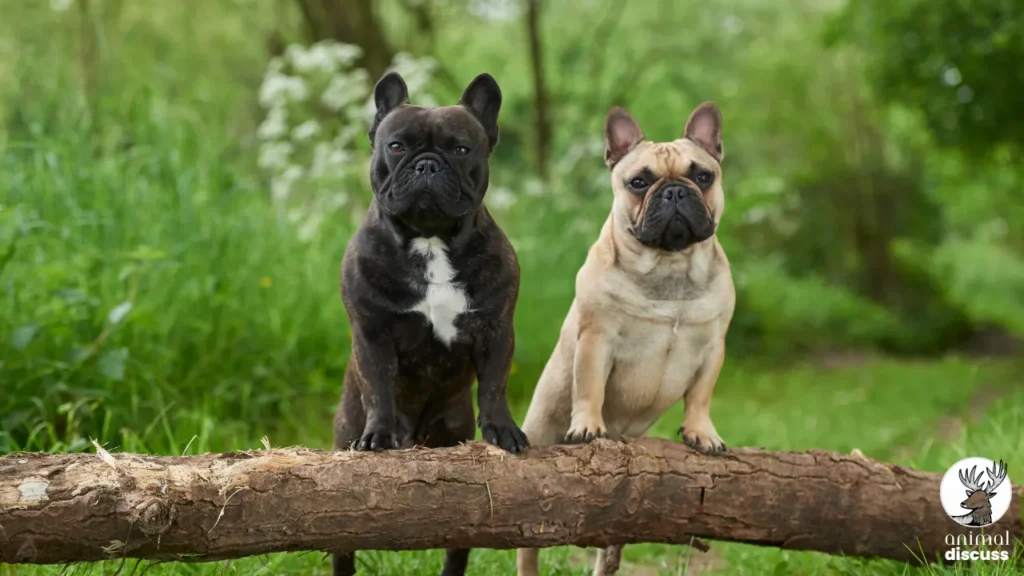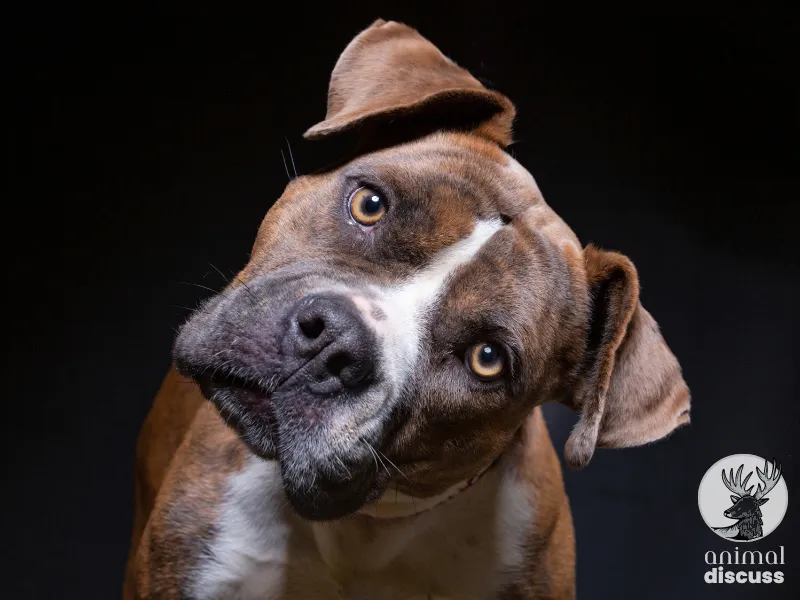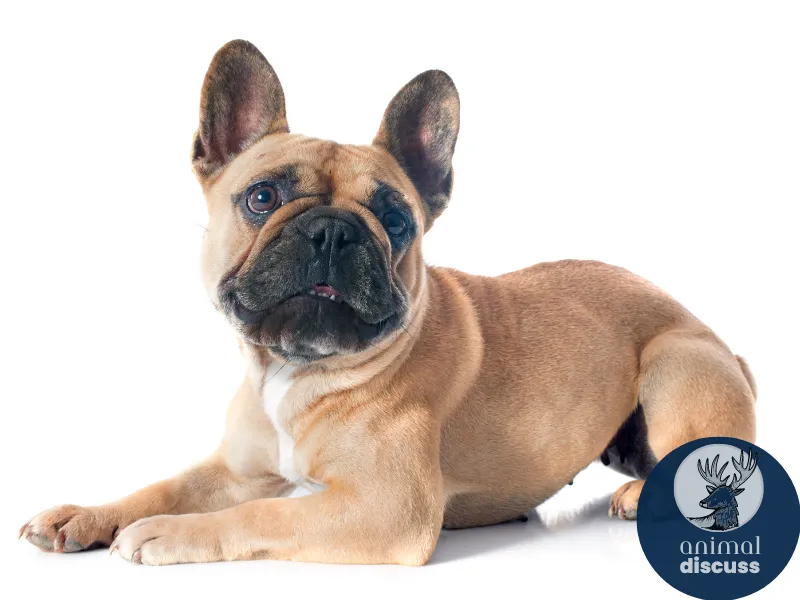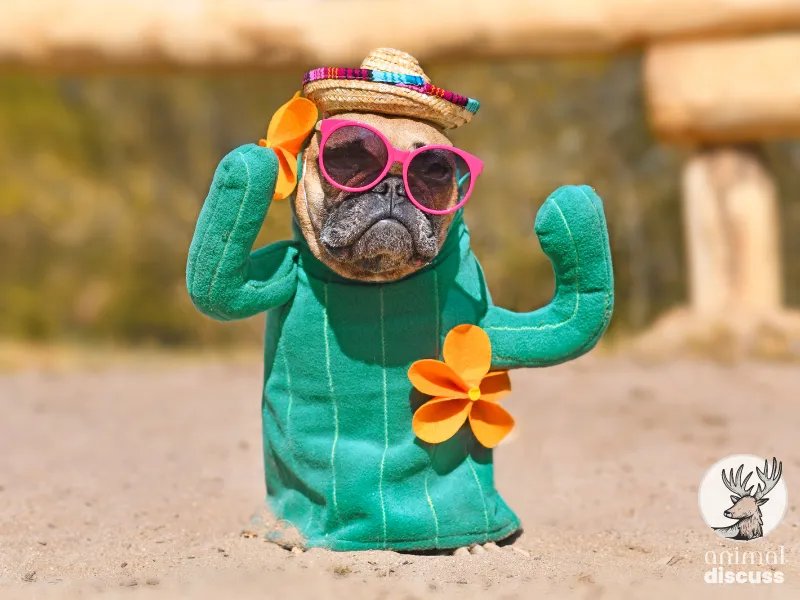A social, fun-loving lapdog, the French bulldog charms us with its mushy face and short size. Recently, this dog breed has become the number one dog breed in America. But there is more to these Frenchies than you think.
The French bulldog is Crossbreed between toy bulldogs from England and local routers of Paris. They are non-sporting dog breeds, and they were bred originally as companion dogs. And if you own a French bulldog, you need to be more careful about your pet.
In this article, I will discuss the traits and origin of French bulldogs as well as their diet and health issues. I will also discuss how to take care of this charming lapdog. Let’s explore the world of French bulldogs.
What are the Characteristics of a French Bulldog? [Reference 1] [Reference 2]
French Bulldogs are mainly a non-sporting dog breed. This dog breed can be your lapdog rather than your jogging partner. The American Kennel Club has recognized some distinctive traits of this breed.

Let’s have a closer look at their characteristics in the table below.
| Traits | Description |
|---|---|
| Breed Group | Non-sporting |
| Size | Small and muscular |
| Color | White, Cream, fawn, Pied, and Brindle |
| Trademark | Bat ears |
| Coat | Small and smooth |
| Temperament | Social, Friendly, Fun Loving |
| Average height | 11-13 inches |
| Average Weight | 28 lb. |
| Lifespan | 10-12 Years |
| Exercise needs | Moderate |
| Energy level | Relatively Low |
| Barking level | Low to Moderate |
A French Bulldog’s lifespan typically ranges from 10 to 12 years. But keep in mind that Frenchies are prone to several health issues. So, if you own a Frenchy, you must be mindful of the health issues. You should also take care of your dog’s diet and exercise.
However, Frenchies are fun-loving animals, and they enjoy interacting with both adults and children. Some breeds treat everyone as their best friend, but some French dogs might be indifferent to everyone except their owner.
So, while keeping this dog as a pet, you might consider its behavior with children. You do not need to worry because this dog is tolerant of children’s behavior. Still, you should always supervise dogs around young children.
To learn more about their behavior, read this article from my blog “French Bulldog Behavior.
What is the Origin of the French Bulldog?
From its name, the origin of this dog is France, but the origin of this breed is England, introduced in the 1800s. It is a crossbreed between a toy bulldog from England and local routers of Paris.

This dog originated as a companion to lace workers in Nottingham during the Industrial Revolution. It was also used for ratting. The workers brought them to France during the Industrial Revolution, and it became popular in France.
Now people keep these dogs commonly as pets. French Bulldogs are registered in several countries and mostly in the United States, the United Kingdom, and France. This dog breed is also popular in Australia and Germany.
To learn more about their habitat, read this article from my blog “About French Bulldogs Habitat”.
What is the Reproductive System of French Bulldogs?
The physical structure of Frenchies makes it challenging for them to mate naturally. We all know that Frenchies have short legs and narrow hips. As a result, male Frenchies are unable to mount females properly. Therefore, the effective method of breeding is artificial insemination.
Moreover, the experts do not recommend natural birth for French Bulldogs. This is because the pups have large heads, and they may become lodged in the delivery canal during childbirth. A C-section carried out by a skilled vet is the safest way to guarantee a healthy birth.
What are the Common Health Conditions of French Bulldogs?
Studies show that Frenchies are more prone to some health conditions than other breeds of dogs. They face respiratory system disorders, corneal ulcers, skin problems, etc. I will discuss these health issues in detail.

Respiratory System Disorder
We know that Frenchies have a short face shape. This facial structure causes the tissues in the throat and at the back of the nose to feel compressed. Because of their flat faces, French Bulldogs are more likely to develop BOAS or brachycephalic obstructive airway syndrome.
Corneal Ulcers
French bulldogs’ squishy, happy faces make them susceptible to eye problems. Their eyes protrude more on their face. Thus, it makes them more vulnerable to eye traumas. These wounds may develop into corneal ulcers, which are extremely painful and might cause blindness if neglected.
Skin Problems
Frenchies are prone to skin allergies, which can result in dermatitis (inflammation of the skin). Several different factors can trigger an allergic reaction—for instance, pollen or dust mites, and food items like wheat.
Ear Disorder
The characteristic “bat ears” of the French Bulldog add much to their appeal, but they are also the cause of several health problems. Bacteria and dirt can easily enter a narrow ear canal through a broad opening. This leads to infection.
Neck, Spine, and Back Issues
French Bulldogs are more likely than other dogs to experience problems and pain with their spine and neck. This is because of the way they have short back legs and a curled tail.
There is a wide range of conditions these dogs suffer from such as slipped discs and back pain. Slipped discs are commonly referred to as intervertebral disc disease (IVDD). This happens as a result of age-related deterioration of the fragile discs that separate the vertebrae (backbones).
What Food Do French Bulldogs Eat?
We know that Frenchies are omnivorous. They can eat both meat and plants. However, there are certain foods that are harmful to them. Therefore, you should be careful enough to maintain a healthy diet for them.

Here’s a list of food that French bulldogs can and cannot eat.
| Appropriate Foods | Harmful Foods |
|---|---|
| Meat | Onion, Garlic and other Spices |
| Different types of Fish | Grapes and Raisins |
| Pumpkin | Avocados |
| Veggies | Chocolate, Tea, Coffee |
| Fruit such as watermelon | Nuts |
| Unsweetened Yogurts | Processed Foods |
| Wheat and grain | Soy, Corn |
What Should be the Diet of French Bulldogs?
Like other dogs, the majority of French Bulldogs require food that is simple to digest. Their food should be rich in lean animal proteins, complex carbs, and a range of fruits and vegetables.
Complex carbohydrates are an essential component of diet due to their ability to balance blood sugar levels. For this reason, feed your Frenchie foods like brown rice, potatoes, and other veggies so that their blood sugar stays stable. And their energy will be released gradually throughout the day.
However, you should not feed your French bulldog sweets, and other foods high in simple carbs. And if you want their coat to remain silky and glossy rather than dry and cracked, you should feed them nutritious food.
Like humans, your dog may have an allergy to certain foods, like corn or soy. But most of the time, the allergies are the fillers that are present in processed foods. And these fillers are difficult to digest and have little nutritional value.
So, giving your dog whole grain instead of fillers is the greatest approach to keeping your dog healthy.
Read this article to know further about their food habits “French Bulldogs Foods and Diet! ”.
How to Take Care of French Bulldogs?
As we know, Frenchies require special care. So, if you own a French bulldog, you should be mindful of their training, grooming, and exercise. I will get into detail on how to take care of these adorable dogs.

Grooming
- French Bulldogs don’t typically shed a lot. So, you should brush the coat of your Frenchie weekly to maintain the health of their coat.
- Moreover, French Bulldogs are susceptible to skin fold dermatitis. For this reason, it’s essential to maintain the cleanliness and dryness of their skin folds.
- You can use damp cotton wool pads to clean them, but always make sure to let them completely dry afterward.
- In addition, you should also clear their ears regularly.
Training
- French Bulldogs are intelligent and eager to learn. Therefore, you can build a stronger relationship with them by giving them frequent instructions.
- This breed is frequently food-motivated, which is advantageous for training your dog. Hence, you should give your dog a treat while training.
- You can teach Basic obedience cues to this breed as early as 8 weeks of age.
- When the time is right, you can enroll your puppy in training and socialization programs. This is a fantastic method for teaching your dog new cues and helping them feel at ease around other dogs and people.
Exercise
The Frenchie is a lapdog rather than a running companion. However, regular exercise is nevertheless crucial. But these dogs are susceptible to overheating. So, it should be done carefully such as –
- Playing outside or within the house will be fun for your Frenchie.
- Other than that, you can play less exhausting games such as quick strolls, fetch, or tug-of-war with them.
Can French Bulldogs Survive in the Wild?
No. As discussed above, the Frenchies suffer from many health issues. Moreover, they have some hereditary features. Because of these issues, they cannot survive in the wild.

First of all, Frenchies are less adapted to forage for food. They have slow running speeds and frequently experience respiratory problems when they overexert themselves. Moreover, in the wild, they have to compete against much bigger and more athletic dogs to forage food.
Besides, French bulldogs need more care and attention because they suffer from many health problems. So, in the wild, it would be impossible for them to survive.
Above all, a breed will only make it past the first generation if it can reproduce in significant quantities on its own! Relatively, Frenchies cannot procreate on their own, they need human intervention for reproduction So, this also reduces the chances of their survival in the wild.
Frequently Asked Questions
These are some frequently asked questions that you may find useful regarding French bulldogs.
1. Why do French bulldogs overheat?
Dogs have few sweat glands, and they cool down their body by inhaling cooler and dry air in warm weather. French bulldogs are brachycephalic dogs, so they have trouble panting and cooling down. This causes overheating in hot weather.
2. What are some dog breeds that are similar to French Bulldogs?
There are few dog breeds that share similarities with French bulldogs. For example, Boston Terrier, French Bullhuahua, Boxer, Pug, Brussels Griffon, etc.
3. Why are French bulldogs so expensive?
French bulldogs are expensive dog breeds because of several reasons. First of all, they are popular and in high demand and they require special care. Mainly, French bulldogs have low breeding rates.
Conclusion
Developed in England in the 1800s, the French bulldogs are the most famous dog breed today. People in the past used this dog for ratting. As they are a non-sporting breed, they are more suitable as lapdogs.
Because of their physical structure, these cute dogs are susceptible to many health problems. So, these dogs require special care, and they also need human intervention for reproduction. Due to all these reasons, this dog breed cannot survive in the wild.

